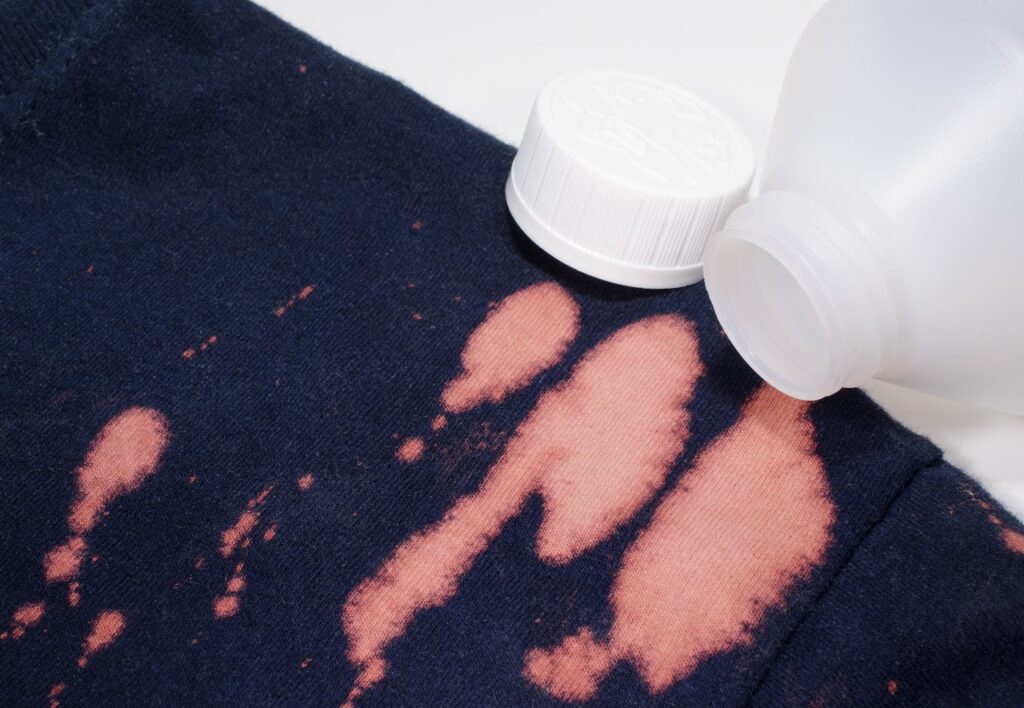
Chlorine is a powerful disinfectant widely used in swimming pools to keep the water clean and safe. However, this very property that makes chlorine effective can also pose a threat to your clothes. Prolonged exposure to pool water containing chlorine can lead to damage, causing fading, discoloration, and weakening of fabric fibers. Understanding how chlorine affects your clothes and taking preventive measures are crucial for preserving their quality and longevity.
This article will delve into the mechanisms behind chlorine damage to clothes, exploring how chlorine interacts with fabrics and outlining practical strategies to protect your garments from this common poolside hazard. We’ll discuss the importance of rinsing swimwear after swimming, the detrimental effects of sunlight exposure on wet clothes, and other essential tips for safeguarding your wardrobe.
Chlorine Damage to Clothing
Does pool chlorine bleach clothes? The answer is a resounding yes. Chlorine acts as a powerful bleaching agent, breaking down the chemical bonds responsible for color and strength in textile fibers. When chlorine comes into contact with fabric, it oxidizes the dye molecules, causing them to lose their vibrancy and leading to fading or discoloration. Over time, repeated exposure to chlorine can weaken the fabric’s structure, making it more prone to tearing and stretching.
The severity of chlorine damage depends on several factors, including the concentration of chlorine in the pool water, the type of fabric, and the duration of exposure. Delicate fabrics like silk, wool, and linen are particularly susceptible to chlorine damage, as their fibers are more fragile than those of synthetic materials.
How Chlorine Affects Fabrics
Chlorine’s damaging effects extend beyond simply fading colors. It can also alter the texture and feel of fabrics. Prolonged exposure to chlorine can cause fabrics to become stiff, rough, and brittle. This is because chlorine disrupts the natural fibers within the fabric, breaking down their elasticity and flexibility.
Furthermore, chlorine can react with certain dyes and finishes used on fabrics, leading to unexpected color changes or even the formation of unsightly stains. For example, chlorine can cause yellowing in white fabrics or turn brightly colored garments a duller shade.
Chlorine’s Impact on Different Fabrics
Different types of fabrics respond differently to chlorine exposure. Natural fibers like cotton and linen are relatively more resistant to chlorine damage compared to delicate materials like silk and wool. However, even these durable fabrics can suffer from fading and weakening over time with repeated exposure to high concentrations of chlorine.
Synthetic fabrics such as polyester and nylon tend to be more resilient to chlorine’s bleaching effects. However, prolonged exposure can still cause discoloration and stiffness in these materials.
Protecting Your Clothes from Chlorine
Taking preventative measures is crucial for safeguarding your clothes from can chlorine damage clothes. Here are some essential tips to minimize the risk of chlorine damage:
- Rinse thoroughly after swimming: Always rinse your swimwear and any other clothing that has come into contact with pool water immediately after swimming. This helps remove excess chlorine before it can penetrate the fabric fibers.
- Avoid leaving wet clothes in direct sunlight: Sunlight can intensify the damaging effects of chlorine on fabrics. Dry your swimwear and chlorine-exposed garments in a shaded area or indoors to prevent further discoloration and weakening.
Rinsing Swimwear After Swimming
Rinsing your swimwear after each swim is one of the most effective ways to protect it from chlorine damage. Use cool running water to thoroughly rinse both the inside and outside of your swimsuit, paying attention to seams and areas where chlorine tends to accumulate.
After rinsing, gently squeeze out excess water and avoid twisting or wringing your swimwear, as this can stretch the fabric. Hang your rinsed swimsuit to dry in a well-ventilated area away from direct sunlight.
Avoiding Sunlight Exposure
Sunlight can exacerbate the damaging effects of chlorine on fabrics. When wet clothes are exposed to sunlight, the UV rays can react with the chlorine residue, accelerating fading and discoloration.
To prevent this, always dry your swimwear and chlorine-exposed garments in a shaded area or indoors. If you must air-dry them outside, choose a location that receives indirect sunlight.
Conclusion
Chlorine is an essential disinfectant for maintaining clean and safe swimming pools, but its powerful bleaching properties can pose a threat to your clothes. By understanding how chlorine affects fabrics and implementing preventive measures like rinsing swimwear after swimming and avoiding sunlight exposure, you can protect your garments from damage and extend their lifespan. Remember, taking these simple steps will help you enjoy your time in the pool without worrying about compromising the quality of your wardrobe.
